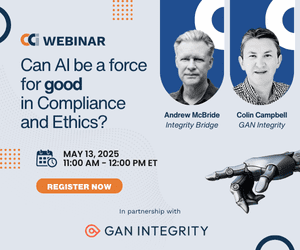It is no secret that the health care benefits landscape is changing. Today, more than five years after the Affordable Care Act (ACA) was enacted, many provisions of the law are already in effect. One provision, however, remains looming on the horizon. Known commonly as the “Cadillac Tax” on high-cost health plans, this ACA Excise Tax is leading many employers to re-evaluate their health care benefits strategies in a way that will hold costs down—while continuing to attract and retain the top talent.
As you may be aware, most large companies today provide health care benefits through employer-sponsored health plans. Under the ACA, employers are only required to offer health care benefits to their full-time employees as defined by the ACA—generally those who work more than 30 hours a week. This has led some employers to stop offering health care benefits to workers who do not meet this threshold of hours worked, sending them instead to secure health coverage through a public exchange.
Established under the ACA, these government-run, online public exchanges (aka marketplaces) offer consumers and part-time workers an opportunity to explore their health care benefits options and buy insurance based on specific lifestyle needs. Healthcare.gov, for example, is a public exchange run by the federal government, but several states and the District of Columbia have created their own state-based exchanges as well. In addition, the ACA has made federal subsidies (or tax credits aid) available to those who qualify.
While most full-time U.S. workers may not be familiar with the process of purchasing coverage through an exchange, that may be about to change—especially with more health benefits consultancies and brokers rolling out their own private exchanges. According to McKinsey, private exchange enrollment has grown from 1.4 million covered lives in 2013 to 2.7 million in 2014, which is nearly a 100 percent year-over-year increase. Going forward, McKinsey estimates that enrollment will continue to grow at a rapid clip—potentially providing health care benefits to between 25 and 30 million U.S. workers by 2019.
Why is the adoption of private exchange solutions expected to grow so quickly?
For employers, the number one reason is cost control. For decades, health care costs have outpaced the rate of inflation. Even though cost increases have slowed in recent years, many employers are still projected to exceed the thresholds of the Excise Tax on high-cost health plans by 2018. Alongside benefits design changes like consumer-directed health plans (a high-deductible health plan with a Health Savings Account (HSA)), private exchanges enable employers to make their costs more predictable.
Through the employer-sponsored benefits model, employers typically offer their employees a “defined benefit.” In other words, an employer will commit to offering their employees a percentage of the total premium cost—typically a 75/25 percent split between the employer and the employee. Under this model, the employer bears a disproportionate share of health care cost increases.
The implementation of a private exchange, on the other hand, enables an employer to change the model to a “defined contribution” offering, which provides the employee with a fixed dollar amount to purchase coverage through the offered exchange. Essentially, this enables the employer to better control their health care costs over time.
Employees may have a greater number of plan options through an exchange. Rather than choosing from two or three predetermined plans in the typical employer-sponsored benefits program, employees can explore a wide variety of health benefits plan options and select the plan that’s right for their lifestyle and financial needs—a decision-making process some call “consumerism.”
In certain cases, private exchanges can also offer employers a new way to engage their employees in the election of health care coverage – a process that was once tedious, confusing and anything but user-friendly. Now, private exchanges that are supported by consumer-centric technology platforms have reinvented this process in a way that empowers employees with new decision support tools, offering more transparent options and allowing employees to make smarter decisions about their health care benefits. Let’s look at the examples below.
John Smith is over 40 years old, visits the doctor regularly and has a wife and two children –with another on the way. John chooses a health plan with a high actuarial value so that a greater share of his family’s health care claims are paid for by his insurer. With a plan like this, John might pay higher premiums up front, but he will pay less out-of-pocket for any of his family’s medical needs.
Jane Doe, on the other hand, is 24 years old, single and healthy. Jane only visits the doctor once each year for annual check-ups. With student loan payments and an entry-level salary, Jane doesn’t want to pay for a plan she doesn’t really need. Instead she leverages a health care cost calculator and determines that she only needs a high-deductible plan with a low actuarial coverage value. That means Jane will pay lower monthly premiums and only face out-of-pocket costs on the limited medical care she needs.
Aside from these benefits, private exchange solutions also enable employers to make responsible health care benefits decisions on behalf of their part-time workers. As noted earlier, many employers do not offer health care benefits to employees who work part-time or less than 30 hours a week. Instead of leaving this segment of their employee population out in the cold, employers now have the opportunity to partner with an exchange that can help direct their employees to the public exchange and offer health insurance guidance to determine premium subsidy eligibility and assist with plan decision support.
While not necessarily the solution for every employer, a private exchange benefits strategy is certainly an option worth exploring as your organization examines the strategic benefits options to hold costs down and drive employee engagement.



 Vic Saliterman is Senior Vice President and General Manager of ADP’s Health Care Reform business. The company recently launched the ADP Private Exchange, a truly independent exchange solution that employers can leverage to evolve at the pace of their health care benefits strategy.
Vic Saliterman is Senior Vice President and General Manager of ADP’s Health Care Reform business. The company recently launched the ADP Private Exchange, a truly independent exchange solution that employers can leverage to evolve at the pace of their health care benefits strategy. 









